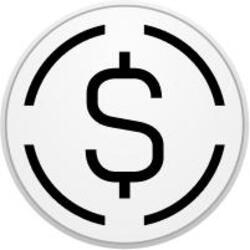In a year in which the stock market has been mainly driven by the whims of tariff policies and publications on the social networks of President Donald Trump, it is even more difficult than usual to forecast whether the market will rise or go down next week, or even day.
The S&P 500 index collapsed 10% in a period of two days after the already infamous Trump press conference announcing its reciprocal tariffs of the “Liberation Day” in 90 countries on April 2, and then regained 9.5% a week later when he reversed in most of them. The index is still 14% below its historical maximum in February and 10% so far this year. The Board Options Exchange Chicago Volatility Index, known as VIX, measures the expected prospective volatility of the S&P 500 and is currently at a historically high level of 30. That effectively means that operators expect the S&P 500 to move 30% in any direction in the next 12 months; A value of less than 20 would be typical in a more normal and stable environment. Last week, before Trump announced the pause in the tariffs, the VIX shot over 50 for the third time in the last 20 years, joining at the levels of the financial crisis from October to December 2008 and at the beginning of the worldwide pandemic in March 2020.
All these peaks have corresponded to market falls, making Vix an indicator of fear. For loud passive investors, with an iron constitution, the previous cases have turned out to be excellent opportunities to simply buy shares. However, for the most advanced investors who usually use options to cover their risks, there are funds centered on the VIX that could be attractive short -term options.
It is not possible to invest directly in the VX of the CBOE, but Proshares, asset manager based in Bethesda, Maryland, offers a quoted bottom (ETF) known as Vix Short-Term Futures ETF (Vixy), which buys short-term purchase options over the VIX. It has risen 44 % since April 2. Proshares also offers the Short Short-Term Futures ETF (SXVY) shorts, which operates short over the VIX, betting that volatility will fall. Since the VIX and the stock market generally move in opposite directions, although not always, the Vixy tends to behave similarly to an option of sale of the S&P 500, betting on the market will fall, and the SXVY behaves in reverse, betting on the shares will rise.
“When the VIX does what it has just done, buying options is two to four times more expensive. Suddenly, who prefer to buy purchase and sale options on the main index When the VIX is 15. “Maybe 5% or 10% of the time over the next few years would use Vixy and Svxy, but this is one of those cases.”
Proshares includes a warning about both ETF: they are designed for short -term use and investors must supervise their investments with a daily frequency, and rightly. The Vix fluctuates so irregularly that any benefit can be ephemeral, already long term, most of these options will expire and losses are practically guaranteed.
Read more: we present the Forbes Cannabis 42.0, the list of the most innovative and revolutionary characters of the industry
The best ways to benefit and protect yourself from market volatility
For investors seeking to mitigate the volatility of the shares with a single fund, some companies combine protection against volatility with a more diversified portfolio. Equity Armor Investments, based in Chicago, manages 171 million dollars in assets in funds such as its Rating Equity Armor Fund (HDCax), which invests mainly in companies of the S&P 500 that pay dividends and also invests up to 20 % of its assets in VIX futures contracts. It has a model to determine which options are cheap or faces and avoid the natural decay associated with the renewal of the VIX options, says Joe Tigay, portfolio co -manager and operations director. Tigay describes the background as an alternative to the balanced portfolios 60/40, now that the bonds have not acted as coverage on exposure to actions this year as they used to do it in the past.
Tigay states that the fund usually allocates about 15% of its assets to its volatility strategy and 85% to shares, which may vary according to the market. When the VIX shoots, the background can transfer part of the profits of these options to actions to balance profitability, and when the actions rise, the Futures of the Vix, in turn, are cheaper. This contributed to its maximum drop in 2020 outside 15%, when the S&P 500 collapsed 34%. Its annualized five -year profitability of 7.1% is less than 14% of the S&P 500, but exceeds the moderately conservative risk index of Morningstar, which is based. So far from 2025, it has dropped 4.8%.
“When there is a lot of volatility, it is not worrying, it is viable and allows us to maneuver in the market,” says Tigay. “It is an intrinsic strategy to sell expensive and buy cheap.”
Many funds also offer covered purchase options strategies that limit the bullish potential through the sale of purchase options outside money on an index, but offer a mattress against falls by distributing the income of these options. The largest is the ETF Equity Premium Inome in JPMorgan, which has 37 billion dollars in assets and offers a profitability of 8.2 %. However, ISBITTS warns that these strategies have not been tested in prolonged bearish markets and prefers to buy sales options directly to protect themselves from individual investments in shares.
“What is the use of income if you are paying yourself with the losses of the shares?” Says Isbitts. “If we have a prolonged bearish market, the ETF of covered options will be remembered as the investment they all loved because they did not realize what could go wrong.”
This article was originally published by Forbes Us.
You may be interested: Trump will study if he says goodbye to the president of the FED, Jerome Powell, reveals an advisor












































